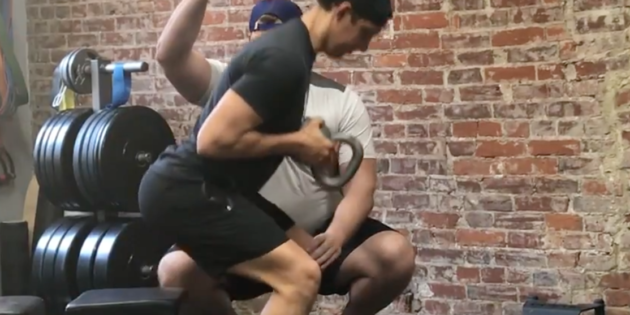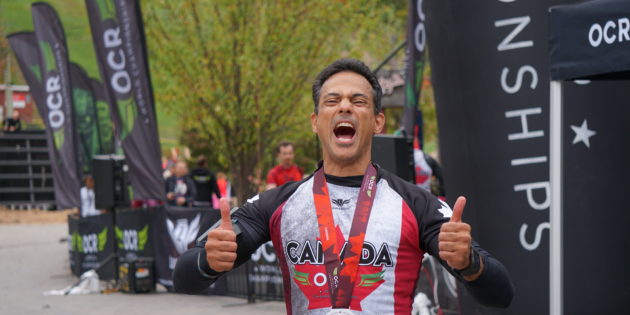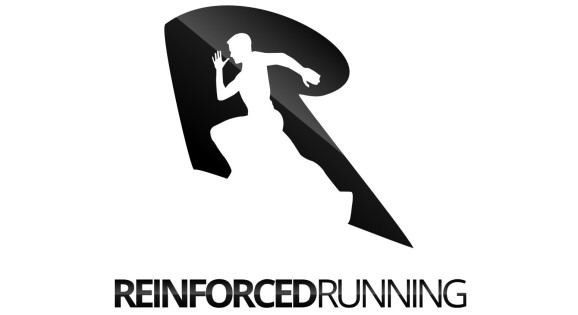Learn why your running strength routine does not work and how to fix it.
Running injuries are a problem. It is the number one reason why people don’t run. These injuries are why you can’t get faster and how you stay in poor of shape.
I spent a lot of my time working with people one on one to get them toward their fitness goals. Most of them are runners. Over time I have noticed patterns pop up while coaching people in a group and personal level.
Some exercises don’t work the way they should.
Most magazine/online articles (like this one) encourage runners to perform “best practices”. Runners suffer similar injuries caused by repetitive motion and muscle weakness. It is easy to get a blanket prescription for strength.
So, when you search the web for a reason why your hips hurt. You will most likely get a list of exercise targeting your butt to help stabilize the knee and ankles. Thus, reducing the motion in your stride.
This is great, but the problem is the exercises don’t work!
Why these exercises don’t work
Now, I agree that the glutes are the key to healthy long-term running. But, there are factors at play.
Life is too busy
Today’s society is swamped. We work 10-12 hours a day. We sit in a car to commute to and from work. We sit at computers for hours and type without shoulders rounded forward.
We sit on your butts all day.
When we sit our glutes stretch and remain stretched for an extended duration. We will begin to lose connection with our glutes, and they will shut off from inactivity.
When our buns are off, it won’t matter how many exercises we do to target the glutes. Your body will compensate by using different areas. So doing glute targeted “PT” workouts don’t do sh*t because of a broken connection.
We get out of shape.
Most of us live are sedentary lives, and we become deconditioned. When we vow to “get back in shape” we are coming from a place way inferior to your previous fitness level. So, we can’t handle our old training routine without preparing the body. As we become more deconditioned, we will lose the ability to contract the muscle.
When we try to add in new exercises, we compensate with other muscle groups. So when we are targeting our glutes, we may be using out quads without knowing.
We don’t have patience.
There is a time to scale and substitute exercises. The time is when you start or after you recover from injury. Your ego may push you too hard without progression. The build-up is what will help you advance further than you have in the past. You need to slow things down and take the appropriate steps to work your way to an advanced movement.
The above factors are why commonly prescribed workouts don’t work for runners.
Below are four common runner exercises that I have found fall short.
Read on and learn
- Why these exercises don’t work for you.
- How to modify movements to improve performance.
- Alternative options to improve effectiveness.
Problem Exercises #1) Clamshells
The clamshell targets the glute medius (outside of the hips). The glute medius stabilizes the knee to reduce injuries like IT band syndrome, runners knee, and plantar fasciitis
This exercise looks and feels simple. But the problem is you can activate the wrong muscle without focus. Too often people will use their quads to lift their knee. You will begin to feel the clamshell on the inside of the quad meaning you are not engaged in your glute medius. You should observe the burn on the outside of your butt.
How to improve
Put your hand on the outside of your glutes and think about the contraction. You should be able to feel your buns get more firm with each rep. Hold the exercise at the top for two seconds and try your hardest to squeeze that glute.
Also, add a mini band. A band will make the exercise a bit more demanding which will force your body to activate more muscle. Adding a band around your knee can help.
Substitute – Curtsey Lunge
The curtsey lunge is a compound movement that will target the outside of your hips and improve your core. You will also learn motor recruitment patterns to help your run.
Problem Exercise #2) Banded Side Steps
You will see the banded side step on more running sites and physical therapy plans. When done it should light up the glute medius with only a few reps.
However, runners tend to move this band from side to side by using the outside of their quads or lower legs. When pushing with their lower legs their knees fold inward and without using the glutes.
When done incorrectly, you will start to feel the burn in your mid quad, the inside of your quads, or even your calves
How to improve
With a slight hinge at your hip. Keep your feet straight while try to press your knee over your toes by engaging in your glutes. Stay active by and “spread the floor” with your feet.
Substitute – Seven-way hips
The side plank leg lift and seven-way hips are a great way to strengthen the glutes while engaging your core. You will also improve joint capsule mobilization by moving in multiple planes.
Problem Exercise #3) Bird Dog
The bird dog is the most misused exercise. Doing the bird dog with proper form and effort should light up your core, back, and glutes. Most of the time people will move through the exercise without intent.
How to improve
To get the most of your bird dog you need to squeeze your midsection and hold for at least 3 seconds. Squeeze as hard as possible by trying to flex your ads and your glutes at the same time.
Running is a compound movement with a lot of moving parts. The bird dog is an excellent practice to keep your core tight and protect your back while running.
Substitute – Plank
Doing planks with a short burst of max contraction is a great way to simulate core control. Do a plank with your pelvis tucked underneath and squeeze your abs as hard as possible. Instead of holding for max duration use short bursts of 10 seconds to maximize effort.
Problem Exercises #4) Squats
The squat is the daddy of all strength exercises. But, too often runners are quad dominant and isolate the benefits of the squat. The squat should hit pretty much every muscle in your lower body and core. But, you can develop compensation and imbalance with poor form.
How to improve
The hip hinge is the catalyst to improve most lower body exercises. A proper hip hinge will keep your glutes and hamstrings activated. Engaging your posterior will create an efficient and well-balanced movement. You will be able to lift more while targeting more muscle which will improve recovery and burn more fat.
Substitute – Bench Step Ups
I strongly recommend you improve your hip hinge. In the meantime, you can build strength in your glutes and quads by doing bench step ups. You will also build single leg strength to improve balance and stability.
You need to make sure you are able to engage and fire the correct muscles to get the most bang for your buck. If you continue to get hurt, chances are that you may need some help and modifications in your movements.


